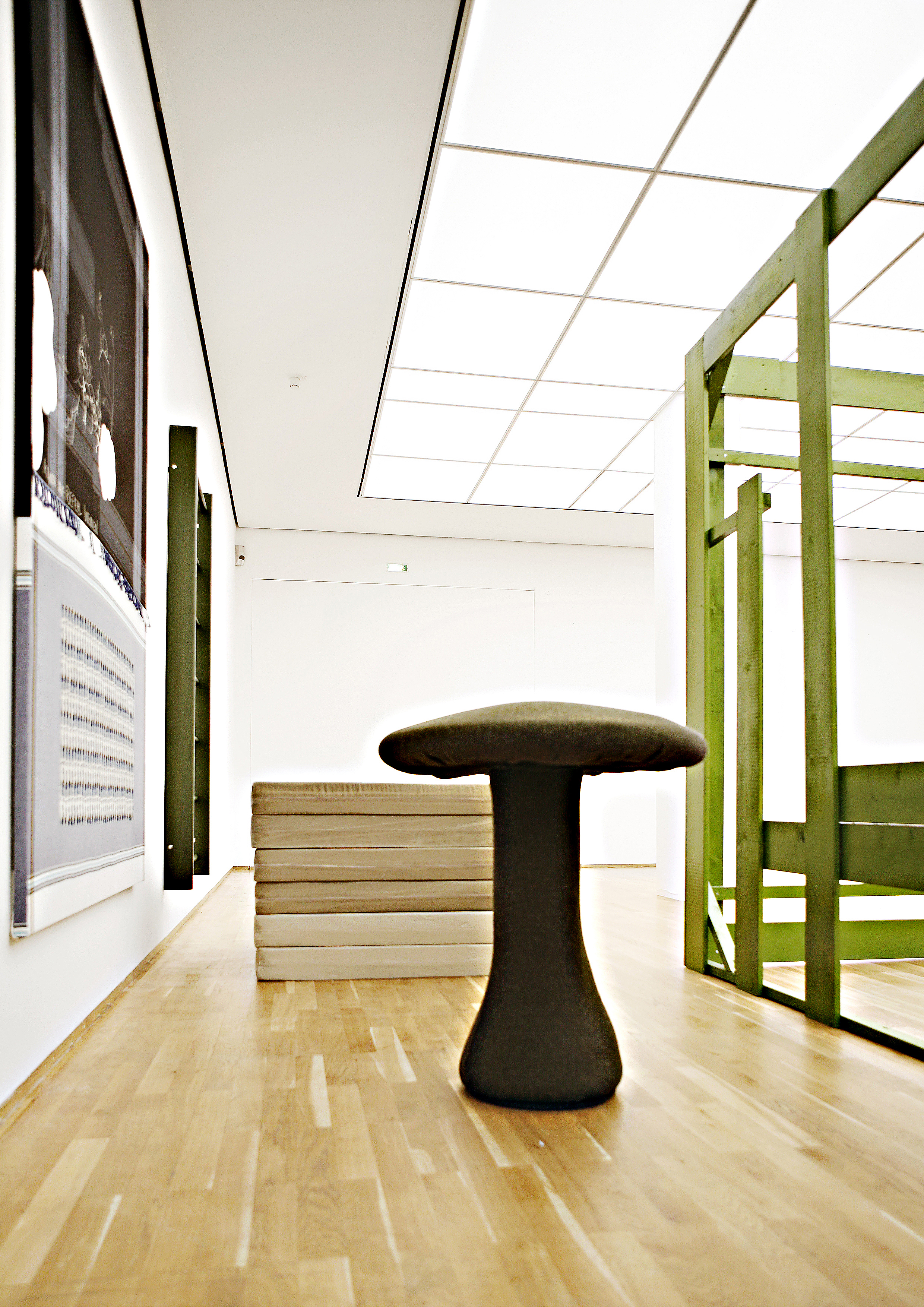Cosima von Bonin
#16 (Mushroom), 2000
Artist
Cosima von Bonin
Title
#16 (Mushroom)
Year of creation
2000
Technology and dimensions
Loden, wood, foam, plexiglass, 87 x 75 cm
Year of acquisition
2008
Acquisition of the foundation
On permanent loan from the Collection of Contemporary Art of the Federal Republic of Germany
All elements of the installation appear to be pushed against a wall of the room. The climbing frame and the two pictures hang on this wall, the mattresses are stacked in front of it, and next to them are a somewhat large handbag and a mushroom-shaped object. The house itself, as a kind of structural “original hut”, joins these objects. Things seem to be waiting for the residents to return so that they can then perhaps return to a sensible, use-oriented order. As in most of Cosima von Bonin's installations, here too there are elements of a narrative, which, however, only takes place in the heads of the viewer. One might also think of props for a film set or a stage set. What is being performed here, however, are the dramas of the sculptural and the painterly itself. The soft materiality of most of the objects, as well as their arrangement, appear painterly, while the pictures take on a strong object-like character through the sewing of different materials together and on top of each other.
The pictures also contain comic-like drawings of figures with octopus-like tentacles sitting on mushrooms, as one also stands in front of the pictures. There are also sewn-on, soft and white fabric parts that look like figures and their speech bubbles at the same time. The texts written underneath, such as “Can cry on command” or “We come to complain,” are quoted from another reality, a Tocotronic song, for example. They can either be related to the figures depicted or to the artist and her social environment. But in the act of viewing you can also relate them to yourself, as a guide, so to speak, to navigate between the narrative suggestions and the self-reflective processes regarding the relationships between image, object and text. The narrative and the self-reflective do not appear as opposites as in the modernist tradition, but rather as mutually reinforcing or alienating elements.
